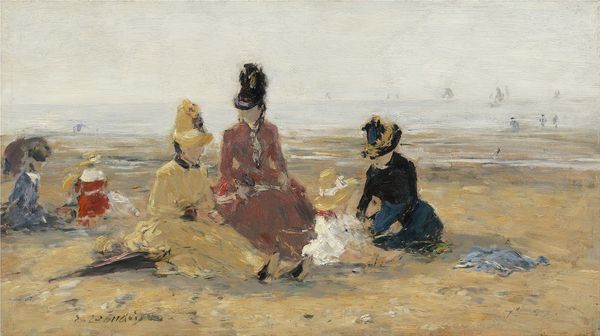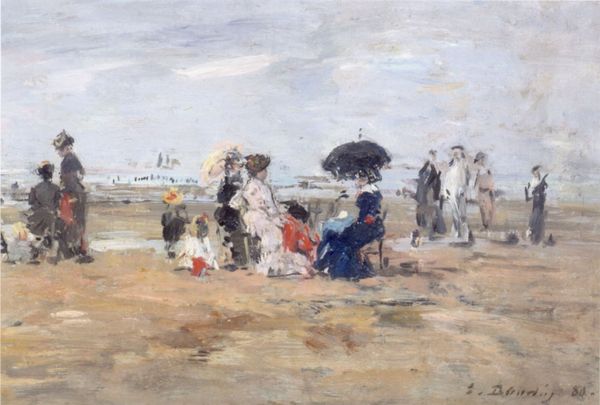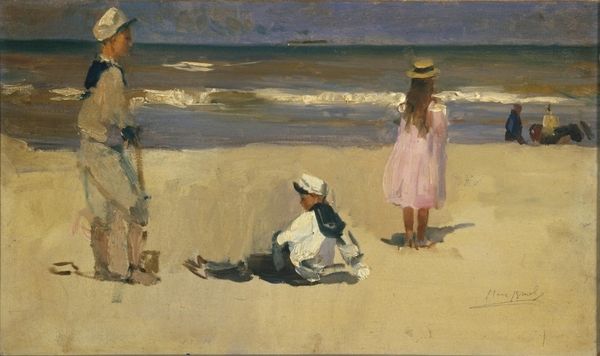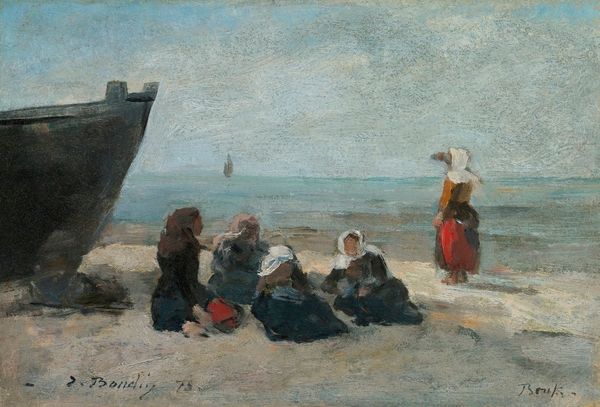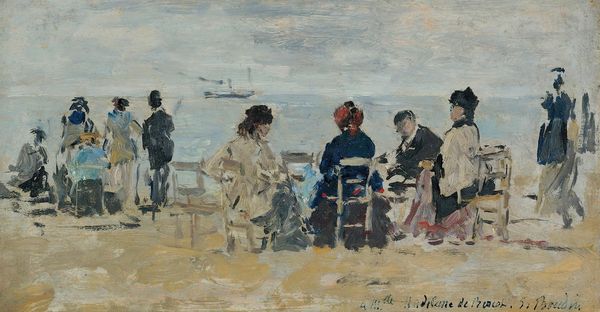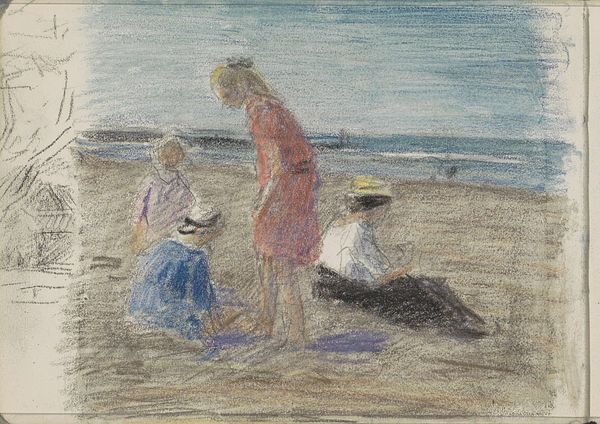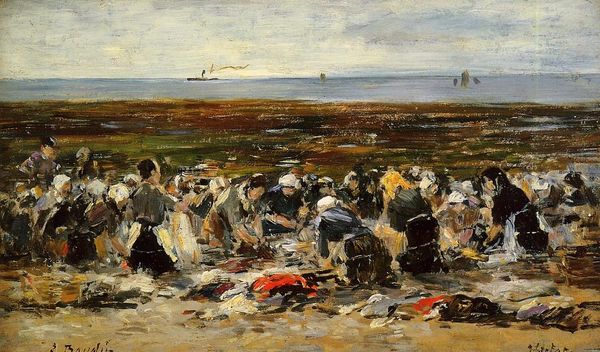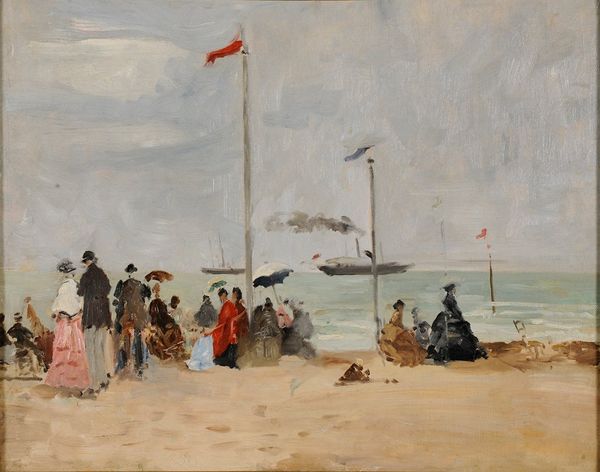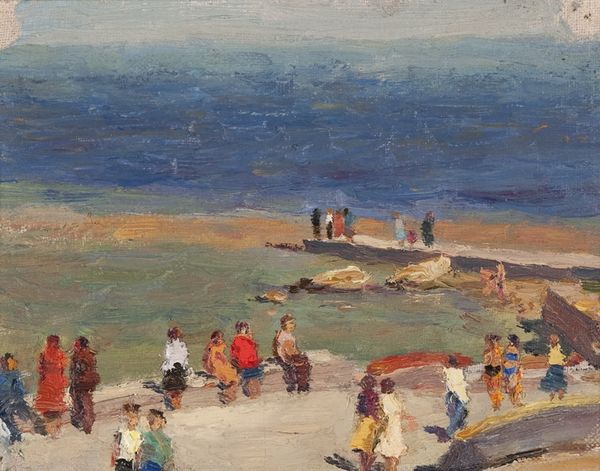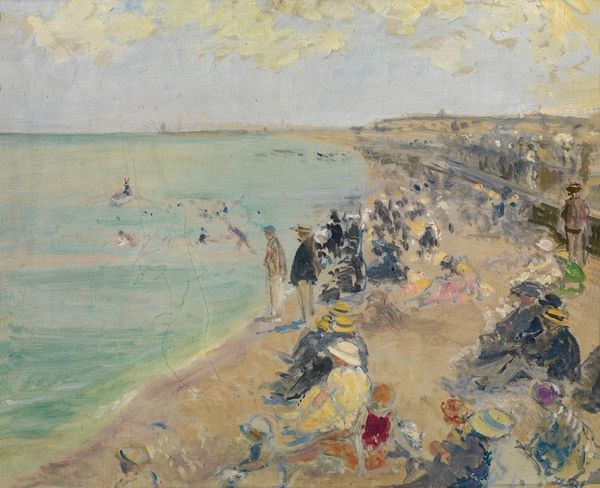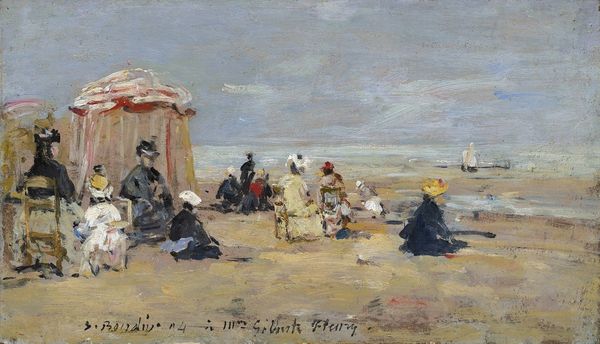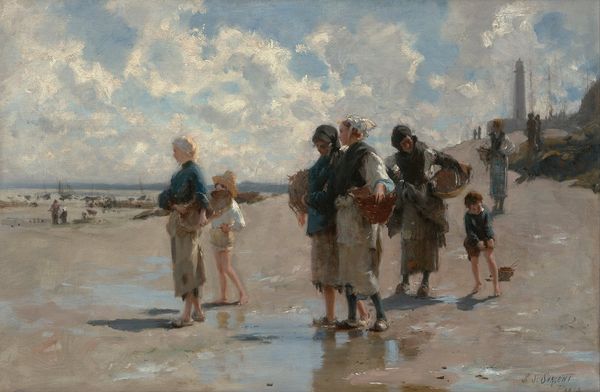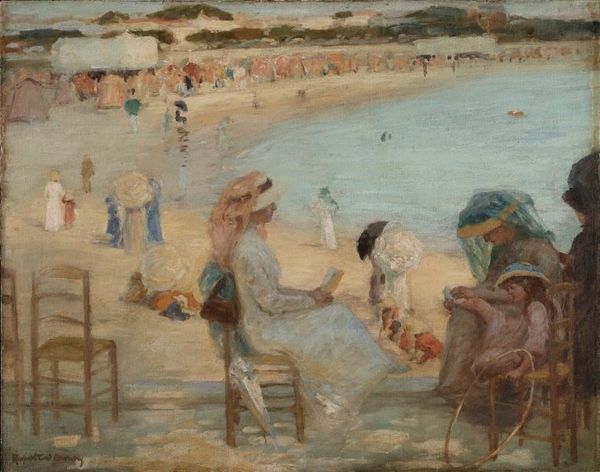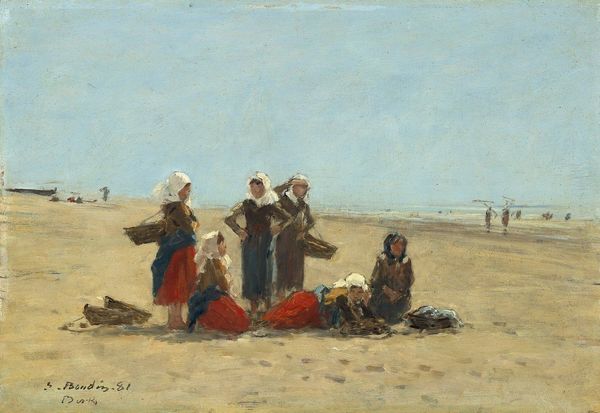
Copyright: Public Domain: Artvee
Curator: Liebermann's "Spielende Kinder am Strand," or "Children Playing on the Beach," completed in 1898, captures a casual seaside scene through an Impressionistic lens. The painting's broad strokes and muted palette render a lively, if fleeting, moment. Editor: Oh, I get a serious whiff of childhood freedom here! Just look at those blurry kids digging away, their focus so intense you can almost hear the shriek of seagulls. It feels real, raw somehow, doesn't it? Not overly romanticized. Curator: Liebermann's Impressionistic style aligns with the plein-air movement; that's painting outdoors, right on location. He's clearly prioritizing capturing the light and atmosphere of the moment over precise detail, an ethos that gained significant traction amongst artists at the time, as academic traditions around artistry waned in significance and new ideas grew from them. Editor: The grays and browns are unexpectedly soothing, even though the subject matter—a gaggle of noisy kids on the beach—could easily lean into chaos. Maybe it’s because he doesn't overdo it with bright colors. There's a melancholy touch as well that contrasts the youthful exuberance of the scene portrayed. I imagine Liebermann enjoyed this subject. Curator: Exactly. The brushwork and limited color choices speak to the social realism embraced by many late 19th-century artists. The figures are not idealized; instead, their postures and clothing indicate ordinary working-class children. These paintings allowed ordinary audiences to experience aesthetic practices as cultural spectators. Editor: Makes you think about the stories behind each little blob of color, doesn't it? Who were they, and what did their lives really look like beyond this captured snapshot? I imagine the sounds that reached the artist. The damp sand between his fingers and the everpresent salty mist. He must have loved painting *en plein air.* Curator: Indeed, and with Liebermann’s prominent role within the Berlin Secession, this work also illustrates broader shifts in the art world towards rejecting academic traditions for more direct and modern visual forms. Editor: So, from a hazy day at the beach to a window into social shifts? That's the power of seeing, I guess. Curator: Precisely. The beauty of art history. Thanks for your perspective, I learned so much from your personal reflections.
Comments
No comments
Be the first to comment and join the conversation on the ultimate creative platform.
